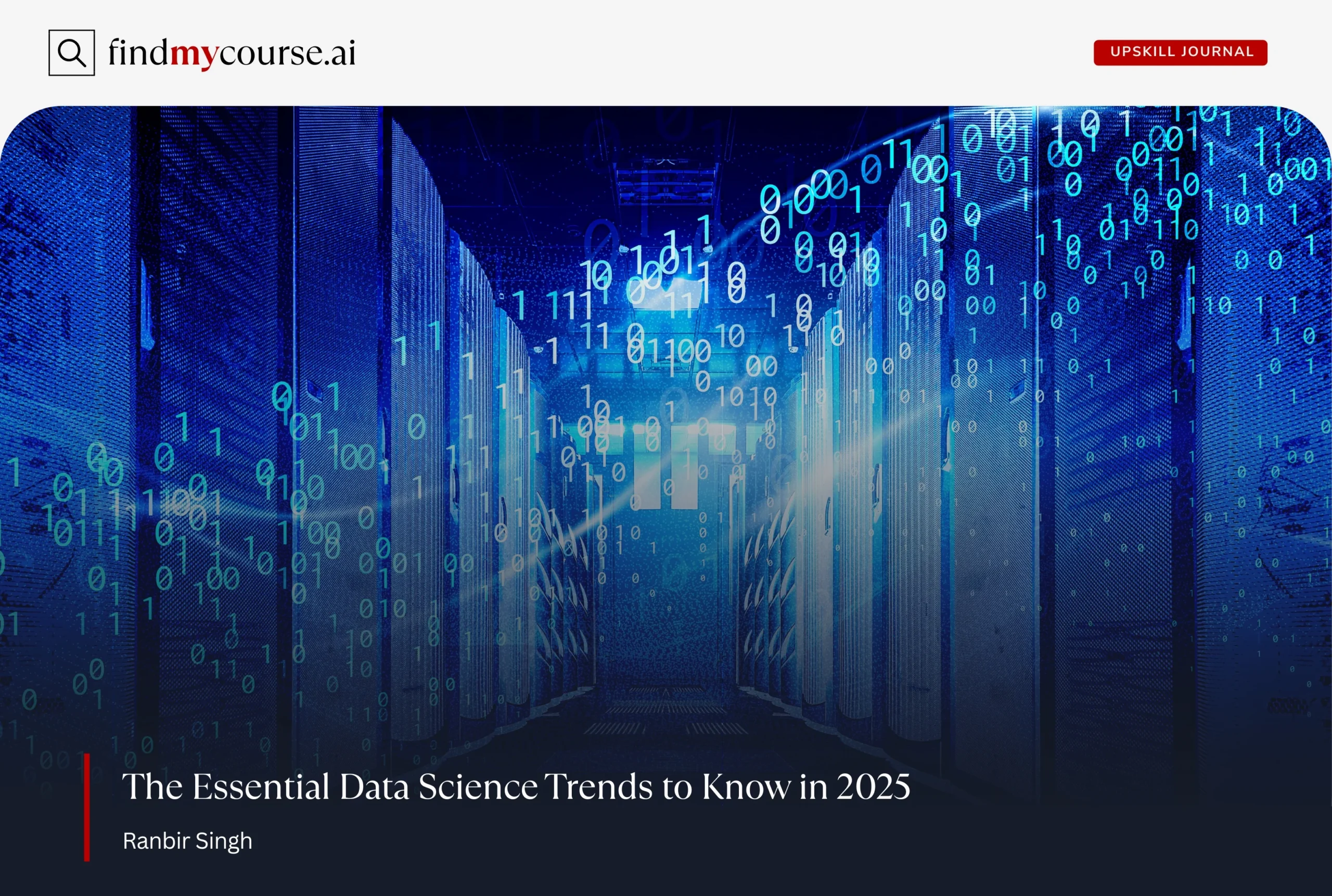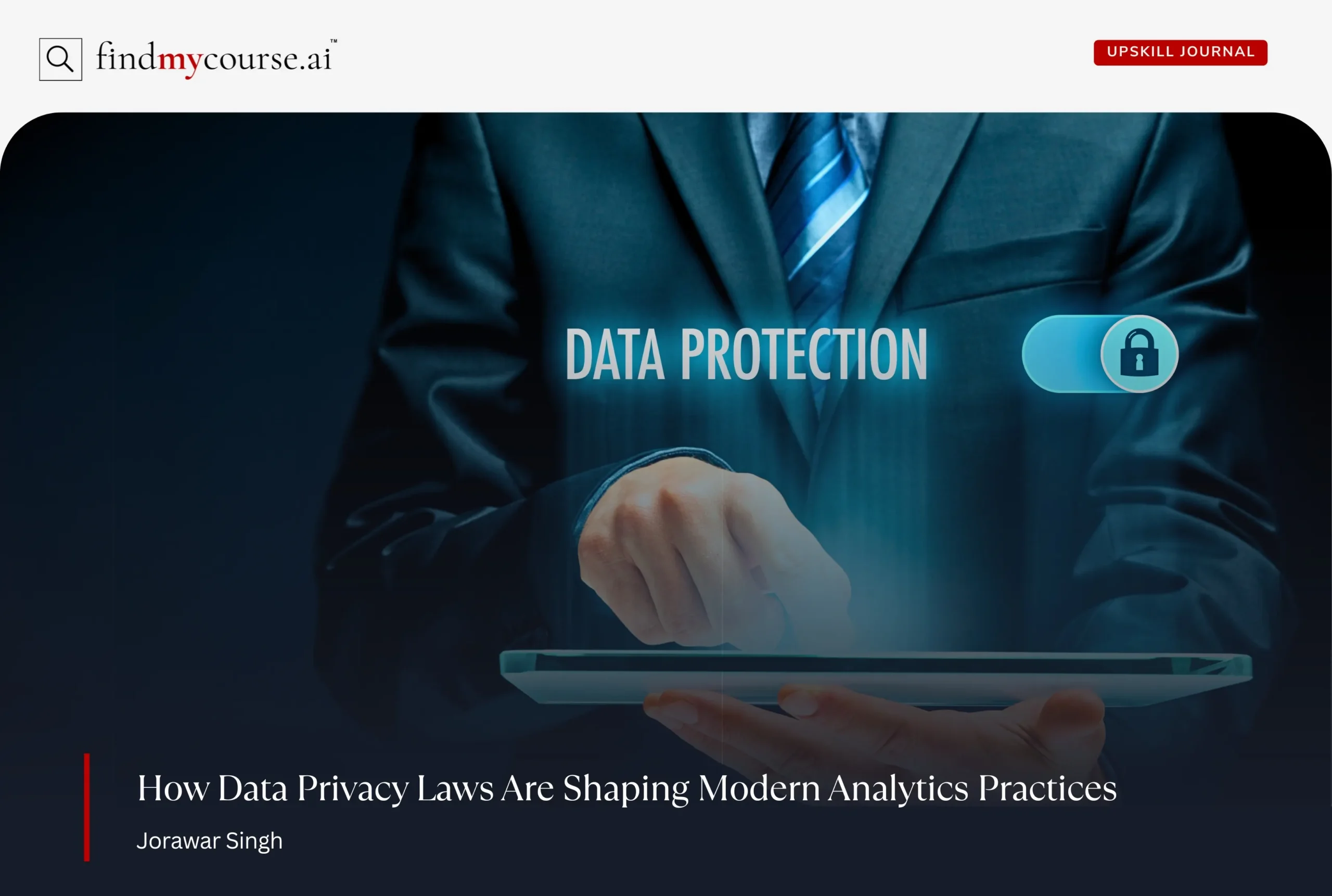Data is at the center of our digital world. As we move into 2025, changes in data science are coming fast and are more exciting than ever. These trends are shaping not just technology, but the way we live, work, and make decisions every day. Whether you’re an experienced data professional, a business leader, or someone looking to study online to learn more about this field, understanding these new trends is important. In this guide, we’ll look at the top data science trends for 2025. You’ll see how big shifts are changing industries, driving new ideas, and creating great opportunities all around the world.
The Top 10 Data Science Trends for 2025
So, what are the biggest trends in data science this year? In 2025, it’s all about new technology and new ways of thinking. Here are the top trends that are changing data science and making a real difference.
1. Generative AI: Creativity Meets Analytics
Generative AI is leading the way in data science for 2025. These smart tools can create things like designs, reports, music, and even realistic fake data by using deep learning and creativity. Businesses are using generative AI to speed up content creation, improve research, and offer more personalized experiences.
This technology helps companies innovate faster and adapt quickly, but it also comes with challenges. People still need to watch for mistakes, false information, or unfair results from these AI systems, and make sure they are used in a responsible and ethical way.
2. Real-Time Data Processing & Edge Computing
The need for instant answers is making real-time data processing and edge computing a must-have. Billions of devices and sensors are creating data every second, and many applications—like self-driving cars, smart factories, or remote health monitoring—need that data analyzed right away, right where it’s made.
Processing data at the “edge” (close to where it’s collected) means faster results, better privacy, and quick decision-making. This helps businesses react quickly to what’s happening in the world.
3. Data Democratization & Low-Code/No-Code Platforms
Now, more people than ever can use data at work—not just specialists. Easy-to-use platforms, many with low-code or no-code options, let employees analyze and visualize data without needing to be expert programmers. This shift helps teams work together, break down old barriers, and make better decisions faster.
But as more people use data tools, it’s important to keep an eye on data quality and make sure information is not misused by those without enough training.
4. Ethical Data Science & Explainable AI (XAI)
As AI becomes a bigger part of our lives, people want to know that decisions made by computers are fair and easy to understand. More companies are now using Explainable AI (XAI) tools, which help show how and why an algorithm makes its choices.
New rules and laws are also pushing companies to protect customer privacy and be more open about how they use data. Building strong ethical guidelines isn’t just good practice—it’s essential for trust and safety in the age of AI.
5. The Paradigm Shift to Data-Centric AI
The focus in AI is changing. Instead of only working on better algorithms, data scientists are spending more time making sure the data itself is high-quality and ready for AI. This “data-centric AI” approach means carefully collecting, labeling, and cleaning data.
Good data is now seen as more important than just having the newest model. The best results often come from better data, not just better code.
6. MLOps and Robust Model Governance
Moving AI from experiments to real-world, reliable systems takes planning and strong operations. That’s where MLOps (Machine Learning Operations) comes in. MLOps is all about building, deploying, and managing machine learning models smoothly and efficiently.
Model governance adds an extra layer, covering ethical, legal, and business rules for using AI safely and responsibly. Together, these practices make sure AI adds real value, lowers risks, and can keep improving over time.
7. Hyper-Personalization and the One-to-One Customer Journey
Thanks to data science, businesses can now give customers truly personalized experiences. Instead of just sorting people into groups, companies can use AI to deliver unique recommendations, content, and support for each person—often in real time.
This kind of “hyper-personalization” boosts customer loyalty and satisfaction, helping companies stand out in a crowded market.
8. Data Science for Sustainability and Social Impact
Data science isn’t just about business anymore. More and more, it’s being used to solve big challenges like climate change, public health, and social issues. Data science can help track energy use, predict weather, manage resources, fight misinformation, and make healthcare more accessible.
By measuring and optimizing progress, data science supports a more sustainable and fair future for everyone.
9. Synthetic Data Generation
As rules about data privacy get stricter, synthetic data is stepping in as a solution. Synthetic data is created by AI to look and act like real data—but it doesn’t include any personal or sensitive details.
This helps solve problems like privacy, data shortages (especially for rare events), and the need to safely share information in fields like healthcare and finance. It allows companies to train and test AI models without risking real people’s data.
10. Multimodal AI and Foundation Models
Multimodal AI and foundation models are changing the game in 2025. These advanced AI systems can understand and generate not just text, but also images, audio, video, and other types of data—all at once.
With tools like GPT-4 and Google Gemini, businesses can combine insights from different kinds of data to build smarter applications, from chatbots to advanced search tools and creative content generators. As more organizations use these technologies, they’re unlocking deeper insights and finding new ways to innovate.
The Evolving Skillset for Data Professionals in 2025
With all these changes across the top data science trends, today’s data professionals need a wider and more flexible set of skills—especially as generative and multimodal AI reshape the field.
- Beyond Core Analytics: Knowing how to program (in Python or R), work with statistics, and use basic machine learning is still important, but now you need to apply these skills in more ways.
- MLOps & Cloud Expertise: Understanding how to deploy, manage, and monitor machine learning models—and using major cloud platforms like AWS, Azure, or Google Cloud—is key for building reliable, scalable systems.
- Domain & Business Acumen: Knowing your industry or business well lets you deliver solutions that really matter, not just run analyses.
- Communication & Storytelling: You must be able to explain your findings in clear, simple language so everyone in the company can understand and act on the insights.
- Ethical AI & Governance: Understanding new privacy laws and how to use AI responsibly—including spotting and avoiding bias—is now a must for anyone working with data.
- Specialized AI Skills: As generative and multimodal AI grow, it’s important to learn things like prompt engineering, fine-tuning big models, and working with data from multiple sources.
- Collaboration & Interdisciplinary Work: Data projects need teamwork. Being able to work with other experts—from engineers and developers to designers, lawyers, and business leaders—makes projects more likely to succeed.
Looking Ahead: Embracing the Future of Data Science
The top 10 data science trends for 2025—from Generative AI and real-time processing to Data-Centric AI and MLOps—are bringing major changes to business and society. These changes are about more than just technology; they’re about using data wisely, responsibly, and for the good of all.
If you want to move forward in your career, or just getting started, it’s important to stay up to date with these trends and build new skills. By following these developments, you’ll stay ahead of the curve and help shape the future.
2025 is full of exciting possibilities. Stay curious, keep learning, and let these data science trends guide you to success. And if you ever need support, our AI assistant is here to help you every step of the way.


